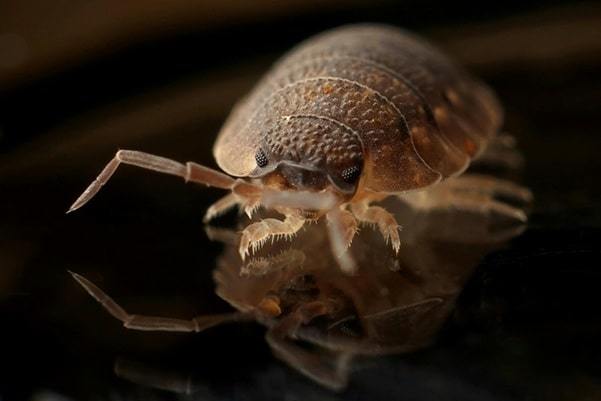Featured Image Caption: Brown 8 Legged Insect on Black Surface
Jump to read...
If you’ve found insect bites on your body, it’s natural to wonder if they may have come from bed bugs. It’s also valuable information, because you’ll want to rid your home of the offending insect as soon as possible. Deciphering between bed bugs and other insect bites isn’t always easy, but there are a few tell-tale signs.
Bite Patterns
Bed bugs tend to bite in a pattern. This can be a straight line or zig-zag across the skin, but you will often find several bites close together in a line across the skin.
Other insect bites are more random. Mosquitos, for instance, bite in no particular order. If you have several mosquito bites, they are more likely to be in numerous locations around your body than in a clustered group.
Flea bites may come in groups of several bites, but they are generally not formed in a line. They are more likely to be found in tight clusters on the lower part of the legs or ankles.
Bite Size
Bed bugs can affect different people in different ways, so bite size alone is not often enough to determine where a bite came from. In general, however, bed bugs cause large bite marks similar to a mosquito bite. Fleas cause smaller bite marks.
Bite Location
Bed bugs live in and around bedding and feed mainly at night. One of the biggest signs of bed bugs is the appearance of bite marks on skin exposed while you are sleeping. If you sleep fully clothed, you may only notice bites on the feet, ankles, wrists, and hands. If you sleep with less covering, you may find them anywhere.
Mosquitos also bite on exposed areas of skin, typically when you are outdoors. You’ll likely notice bites on the arms and legs, since these areas are often uncovered during the warm weather months when mosquitoes are active.
Fleas jump onto humans and animals as they walk by. Bites are usually found on the ankles, feet, and lower legs where they land.
Bite Appearance
Bed bug bites can appear very similar to other insect bites. Their appearance can also differ from one person to another, depending on how the skin reacts. Some people react more than others. Generally, bed bug bites are more likely to be:
- Large in size.
- Have a pink or purple area in the center.
- Be lighter than the surrounding flesh on the outer portions.
Mosquito bites can look very similar in appearance. The primary way to decipher mosquito bites from bed bug bites is by paying attention to their pattern and where they appear on the skin.
Flea bites are much smaller than either bed bug or mosquito bites and are often pink or red in appearance.
Other Signs of Bed Bugs
Aside from the visible bite marks, there are other signs of bed bugs you can check for to determine if you have them. These can include:
- A sweet smell in or around your bed.
- Insect casings or exoskeletons.
- Red or brown markings on your mattress or bedding.
- Visible insects in mattress seams, bed frame joints, under baseboards, or in furniture crevices.
Other Types of Bite Marks
In some cases, the most common biting insects are not the cause of bite marks. A few other common causes may include the following.
Spider Bites
Like bed bugs, spiders tend to bite at night while you sleep. The difference is that they usually only bite once. A spider bite may also have a defined bite mark in the center, become swollen, and cause pain instead of itching after the initial bite.
Hives
Hives resemble bite marks, but they are generally the result of an allergic reaction or another histamine response within the body. They can appear as raised pink or flesh colored bumps and are often very itchy. Like bed bug marks, they may also show up in a line or in clusters. If your bumps begin to fade within a few hours, they’re more likely to be hives than an insect bite.
Dermatitis
Certain types of eczema and other skin conditions can cause bumps and itching similar to insect bites. If you have no other signs of a bed bug infestation, it doesn’t hurt to have any skin irritation investigated by a healthcare professional.
Dealing with Bed Bugs
Once you have determined it is bed bugs you’re dealing with, it’s time to take action. Ways to deal with bed bugs can include:
- Spraying the affected area with an approved bed bug insecticide.
- Washing sheets and other bedding in hot water and drying on high heat.
- Vacuuming the area thoroughly, especially in seams and other crevices.
By Andrew Lemieux
who is a creative writer, poet, and content strategist. He is passionate about literature, food, wine, travel, and sports. In his spare time he enjoys working on home projects and restoring the 1837 Greek Revival he and his wife own.
Member since December, 2023
View all the articles of Andrew Lemieux.




















Leave a Reply